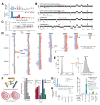Evolution and lineage dynamics of a transmissible cancer in Tasmanian devils
- PMID: 33232318
- PMCID: PMC7685465
- DOI: 10.1371/journal.pbio.3000926
Evolution and lineage dynamics of a transmissible cancer in Tasmanian devils
Abstract
Devil facial tumour 1 (DFT1) is a transmissible cancer clone endangering the Tasmanian devil. The expansion of DFT1 across Tasmania has been documented, but little is known of its evolutionary history. We analysed genomes of 648 DFT1 tumours collected throughout the disease range between 2003 and 2018. DFT1 diverged early into five clades, three spreading widely and two failing to persist. One clade has replaced others at several sites, and rates of DFT1 coinfection are high. DFT1 gradually accumulates copy number variants (CNVs), and its telomere lengths are short but constant. Recurrent CNVs reveal genes under positive selection, sites of genome instability, and repeated loss of a small derived chromosome. Cultured DFT1 cell lines have increased CNV frequency and undergo highly reproducible convergent evolution. Overall, DFT1 is a remarkably stable lineage whose genome illustrates how cancer cells adapt to diverse environments and persist in a parasitic niche.
Conflict of interest statement
The authors have declared that no competing interests exist.
Figures



Similar articles
-
The evolution of two transmissible cancers in Tasmanian devils.Science. 2023 Apr 21;380(6642):283-293. doi: 10.1126/science.abq6453. Epub 2023 Apr 20. Science. 2023. PMID: 37079675 Free PMC article.
-
Genome sequencing and analysis of the Tasmanian devil and its transmissible cancer.Cell. 2012 Feb 17;148(4):780-91. doi: 10.1016/j.cell.2011.11.065. Cell. 2012. PMID: 22341448 Free PMC article.
-
Curse of the devil: molecular insights into the emergence of transmissible cancers in the Tasmanian devil (Sarcophilus harrisii).Cell Mol Life Sci. 2020 Jul;77(13):2507-2525. doi: 10.1007/s00018-019-03435-4. Epub 2020 Jan 3. Cell Mol Life Sci. 2020. PMID: 31900624 Free PMC article. Review.
-
ERBB3: A potential serum biomarker for early detection and therapeutic target for devil facial tumour 1 (DFT1).PLoS One. 2017 Jun 7;12(6):e0177919. doi: 10.1371/journal.pone.0177919. eCollection 2017. PLoS One. 2017. PMID: 28591206 Free PMC article.
-
Devil Facial Tumours: Towards a Vaccine.Immunol Invest. 2019 Oct;48(7):719-736. doi: 10.1080/08820139.2019.1624770. Epub 2019 Jun 4. Immunol Invest. 2019. PMID: 31161832 Review.
Cited by
-
No Evidence for Distinct Transcriptomic Subgroups of Devil Facial Tumor Disease (DFTD).Evol Appl. 2025 Apr 1;18(4):e70091. doi: 10.1111/eva.70091. eCollection 2025 Apr. Evol Appl. 2025. PMID: 40177324 Free PMC article.
-
Mitochondria on the move: Horizontal mitochondrial transfer in disease and health.J Cell Biol. 2023 Mar 6;222(3):e202211044. doi: 10.1083/jcb.202211044. Epub 2023 Feb 16. J Cell Biol. 2023. PMID: 36795453 Free PMC article.
-
Saving the Devils Is in the Details: Tasmanian Devil Facial Tumor Disease Can Be Eliminated with Interventions.Lett Biomath. 2022 Feb 15;9(1):121-140. doi: 10.30707/LiB9.1.1681913305.269822. Epub 2022 Sep 1. Lett Biomath. 2022. PMID: 37655234 Free PMC article.
-
Prevalence and polymorphism of a mussel transmissible cancer in Europe.Mol Ecol. 2022 Feb;31(3):736-751. doi: 10.1111/mec.16052. Epub 2021 Jul 16. Mol Ecol. 2022. PMID: 34192383 Free PMC article.
-
Group phenotypic composition in cancer.Elife. 2021 Mar 30;10:e63518. doi: 10.7554/eLife.63518. Elife. 2021. PMID: 33784238 Free PMC article. Review.
References
-
- Hawkins CE, Baars C, Hesterman H, Hocking GJ, Jones ME, Lazenby B, et al. Emerging disease and population decline of an island endemic, the Tasmanian devil Sarcophilus harrisii. Biol Conserv. 2006;131(2):307–24. 10.1016/j.biocon.2006.04.010 WOS:000239069700014. - DOI
Publication types
MeSH terms
Grants and funding
LinkOut - more resources
Full Text Sources

